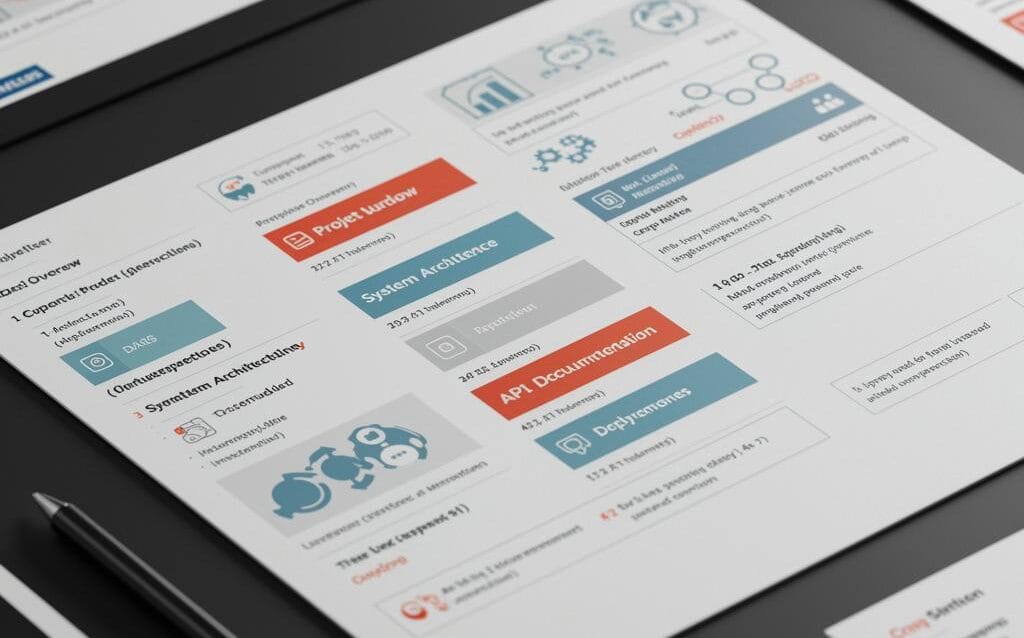Developer Handoff: Essential Documentation for Smooth Projects
What to Include in a Developer Handoff Document
A smooth developer handoff is crucial for transforming designs into functional products without hiccups. A well-crafted handoff document serves as the bridge between designers and developers, ensuring everyone is on the same page and minimizing costly revisions later on. This post details the essential elements of a comprehensive developer handoff document.
Design Specifications
This section provides developers with the core visual and interaction details of the design.
Style Guide
Include a link to your design system or style guide. This should encompass typography (font families, sizes, weights), color palettes (hex codes, RGB values), and spacing rules. A consistent style guide streamlines the development process and ensures visual consistency across the platform.
Assets
Provide all necessary assets in the correct formats and resolutions. This includes images, icons, logos, and any other visual elements. Clearly label and organize them for easy access. Specify preferred formats (e.g., SVG for vector graphics) to maintain quality across different devices.
Redlines/Measurements
Detailed measurements and specifications are essential for accurate implementation. Clearly indicate margins, padding, element sizes, and spacing between elements. Use redlines or annotations directly on the design files to visually represent these measurements.
Interaction and Functionality
Beyond the visuals, clearly communicating how elements behave is vital.
User Flows
Provide clear user flows demonstrating how users navigate through different screens and interact with various features. This helps developers understand the intended user experience and build the logic accordingly.
Prototypes
Interactive prototypes bring the design to life and allow developers to experience the intended interactions firsthand. Link to your interactive prototype, clearly marking any specific interactions or animations that need attention.
Animation Specifications
If your design includes animations, provide detailed specifications. Specify animation types (e.g., ease-in-out, fade), duration, and any specific timing functions. Use examples or references whenever possible.
Technical Requirements
This section outlines the technical considerations for development.
Platform Considerations
Specify the target platforms (e.g., web, iOS, Android) and any specific platform guidelines that need to be followed. This helps developers optimize the implementation for each platform.
Third-Party Integrations
List any third-party integrations required, such as payment gateways or analytics tools. Include relevant documentation and API keys if necessary. This ensures developers can seamlessly integrate these services.
Accessibility Guidelines
Adhering to accessibility guidelines is crucial for inclusivity. Specify the accessibility standards to be followed (e.g., WCAG) and provide any specific requirements for ensuring the product is usable by people with disabilities.
Version Control and Communication
Maintaining clear communication and version control is crucial throughout the development process.
Version History
Track design versions and clearly communicate any updates or changes to the developers. This prevents confusion and ensures everyone is working with the latest version of the design.
Communication Channels
Establish clear communication channels for addressing questions and providing feedback. This could include regular meetings, project management tools, or dedicated communication platforms.
Conclusion
A comprehensive developer handoff document is an investment in the success of your project. By providing clear specifications, fostering communication, and addressing all relevant aspects, you can ensure a smoother development process, reduce misunderstandings, and ultimately deliver a high-quality product that aligns perfectly with the design vision. Investing time in creating a thorough handoff document will save time and resources in the long run and contribute significantly to a successful product launch. Don’t underestimate its importance!

